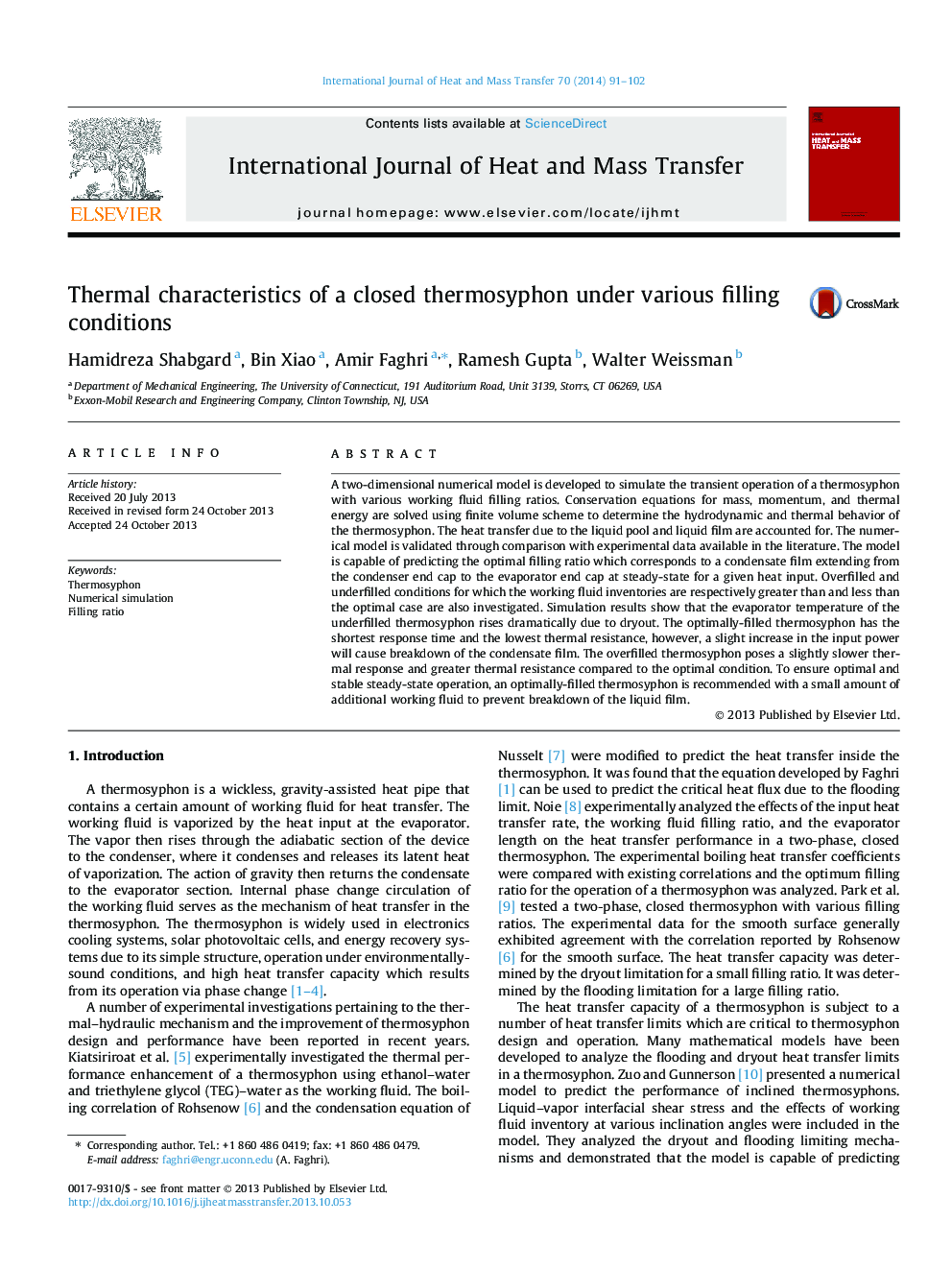| Article ID | Journal | Published Year | Pages | File Type |
|---|---|---|---|---|
| 657579 | International Journal of Heat and Mass Transfer | 2014 | 12 Pages |
Abstract
A two-dimensional numerical model is developed to simulate the transient operation of a thermosyphon with various working fluid filling ratios. Conservation equations for mass, momentum, and thermal energy are solved using finite volume scheme to determine the hydrodynamic and thermal behavior of the thermosyphon. The heat transfer due to the liquid pool and liquid film are accounted for. The numerical model is validated through comparison with experimental data available in the literature. The model is capable of predicting the optimal filling ratio which corresponds to a condensate film extending from the condenser end cap to the evaporator end cap at steady-state for a given heat input. Overfilled and underfilled conditions for which the working fluid inventories are respectively greater than and less than the optimal case are also investigated. Simulation results show that the evaporator temperature of the underfilled thermosyphon rises dramatically due to dryout. The optimally-filled thermosyphon has the shortest response time and the lowest thermal resistance, however, a slight increase in the input power will cause breakdown of the condensate film. The overfilled thermosyphon poses a slightly slower thermal response and greater thermal resistance compared to the optimal condition. To ensure optimal and stable steady-state operation, an optimally-filled thermosyphon is recommended with a small amount of additional working fluid to prevent breakdown of the liquid film.
Related Topics
Physical Sciences and Engineering
Chemical Engineering
Fluid Flow and Transfer Processes
Authors
Hamidreza Shabgard, Bin Xiao, Amir Faghri, Ramesh Gupta, Walter Weissman,
